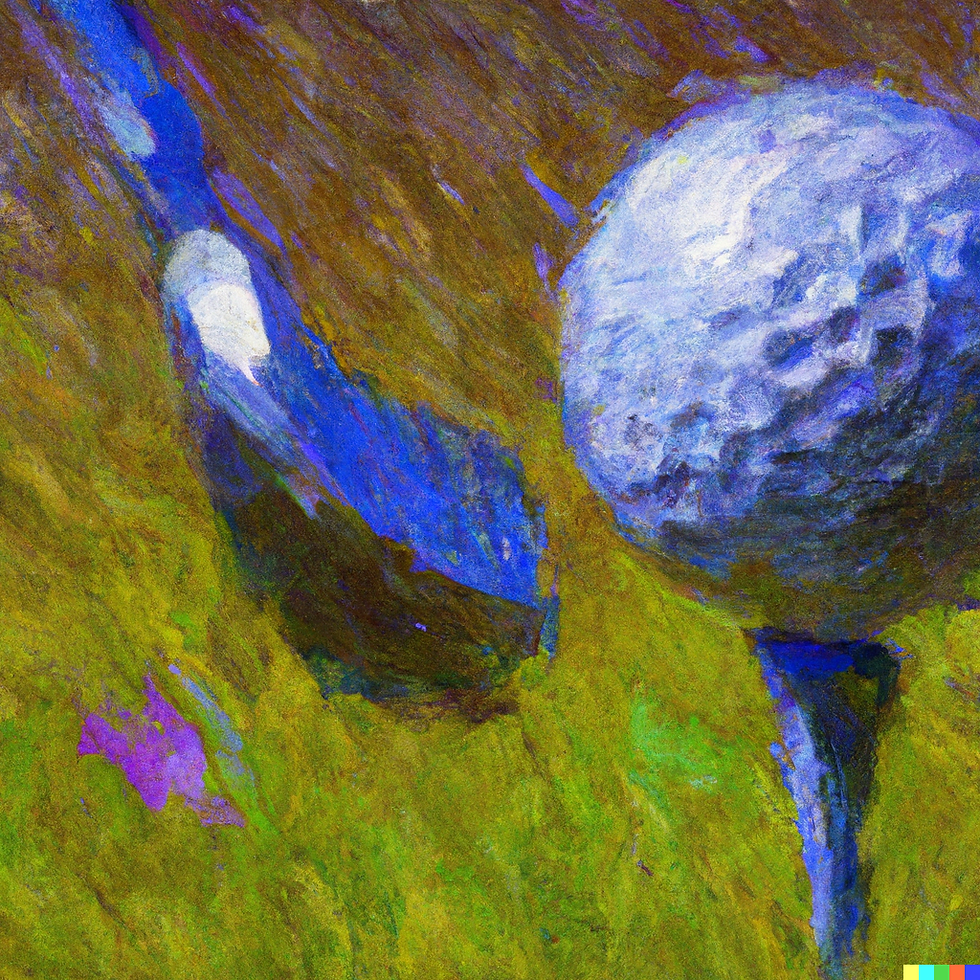Golf's Kinematic Chain and Physical Limitations: A Biomechanical Perspective of Golf
- Luke Fairways
- May 30, 2023
- 4 min read
Golf, often perceived as a leisurely activity, is an immensely complex sport when examined from a biomechanical perspective. The act of swinging a golf club is a synchronized sequence of events referred to as the 'kinematic chain'. It begins with a subtle shift of weight on the golfer's feet, proceeds through a powerful rotation of the trunk, and culminates with a forceful swing of the arms and club, propelling the golf ball towards its target.
This kinematic chain is like a dance, with each body segment (feet, legs, hips, trunk, shoulders, arms, and hands) moving in a timed sequence to generate speed and accuracy. But what happens when our physical limitations impede this dance? Especially, the range of motion around key joints and the strength of certain muscles?
In this expanded essay, we'll delve deeper into the specifics of how physical limitations can influence the kinematic chain in golf, linking the impact of flexibility and strength in key areas to our understanding of human biomechanics.
Want to test your flexibility? Take a look at this at home test.
The Kinematic Chain: A Biomechanical Overview
Biomechanics is the science that applies the laws of mechanics to understand how the body moves. In golf, the biomechanics of the swing is often referred to as the 'kinematic chain'. This chain involves three major segments: the lower body (hips and legs), the trunk (torso), and the upper body (arms and hands). Each segment contributes uniquely to the swing, and the efficiency of their coordinated movement determines the effectiveness of the energy transfer from the body to the club, and finally to the golf ball.
Physical Limitations in the Lower Body: Biomechanics of Golf
In biomechanical terms, the lower body serves as the base of support for the golf swing. It comprises several key joints including the ankle, knee, and hip joints, as well as major muscle groups such as the quadriceps, hamstrings, and gluteal muscles.
Reduced hip mobility, particularly in rotation, can restrict the golfer's ability to effectively turn their body during the swing. The hip joint, a ball-and-socket joint, allows movement in three planes: flexion-extension, abduction-adduction, and internal-external rotation. Limitations in hip rotation can lead to compensations in other parts of the body, often resulting in increased stress on the lumbar spine or an overreliance on the upper body to generate swing power.
The gluteal muscles play a crucial role in stabilizing the hip and maintaining balance during the golf swing. Weakness in these muscles can lead to instability in the golf stance, thus disrupting the energy transfer through the kinematic chain. Specifically, the gluteus maximus, the largest muscle in the human body, is heavily involved in hip extension and external rotation, both critical movements during the downswing.
Physical Limitations in the Trunk: Biomechanics of Golf
The trunk, comprised of the thoracic and lumbar spine, as well as the pelvic region, plays a pivotal role in golf swing biomechanics. It bridges the lower body to the upper body, facilitating the transfer of energy produced by the legs to the arms and eventually the club. Both flexibility and strength in the trunk are essential for a biomechanically efficient and powerful golf swing.
Limited spinal mobility, especially in rotation, can hinder the golfer's ability to rotate their upper body independently from their lower body, a critical aspect of an efficient golf swing. The thoracic spine, the midsection of our back, has the greatest degree of rotation amongst the spinal regions. However, a common issue amongst golfers is limited thoracic rotation, often due to prolonged sedentary behaviours like sitting. This limitation often leads to an 'over-the-top' swing path, a common swing fault that often results in an undesired ball flight, like slices or pulls.
Moreover, a biomechanically efficient golf swing requires a strong and stable core. The core, comprised of the rectus abdominis, obliques, transversus abdominis, and the multifidus muscles, plays a significant role in maintaining posture during the swing, controlling the movement of the trunk, and facilitating the transfer of energy through the kinematic chain. Weakness in these muscles can lead to postural instability, resulting in inconsistent ball striking and lower swing efficiency.
Physical Limitations in the Upper Body: A Biomechanics of Golf
The upper body, comprised of the shoulders, arms, and hands, is tasked with the important job of guiding the club towards the ball and generating clubhead speed. Limitations in the flexibility or strength of the upper body can significantly disrupt the final link in the kinematic chain.
Limited shoulder mobility, particularly in the glenohumeral joint, can affect the golfer's ability to maintain a wide swing arc, crucial for generating clubhead speed. The shoulder joint is a complex structure, allowing a high degree of mobility in multiple planes. However, limitations in this mobility, particularly in abduction and horizontal adduction, can also affect the golfer's ability to keep their arms extended during the swing, leading to a lack of control over the clubface at impact.
Lastly, the hands and forearms play a pivotal role in controlling the club throughout the swing. The forearm muscles, including the flexors and extensors, along with the small muscles of the hand, contribute to grip strength. A weakened grip can lead to inconsistent clubface control and erratic ball flight, compromising both the distance and direction of the shot.
Understanding the biomechanics of the golf swing can provide valuable insights into how physical limitations, particularly in joint mobility and muscle strength, can dramatically affect golf performance. This detailed examination of the body's kinetic chain, with an emphasis on the lower body, trunk, and upper body, underpins the importance of a well-rounded physical conditioning program for golfers. Addressing these physical limitations through targeted exercise can lead to improved performance on the golf course and a lower risk of injury.




